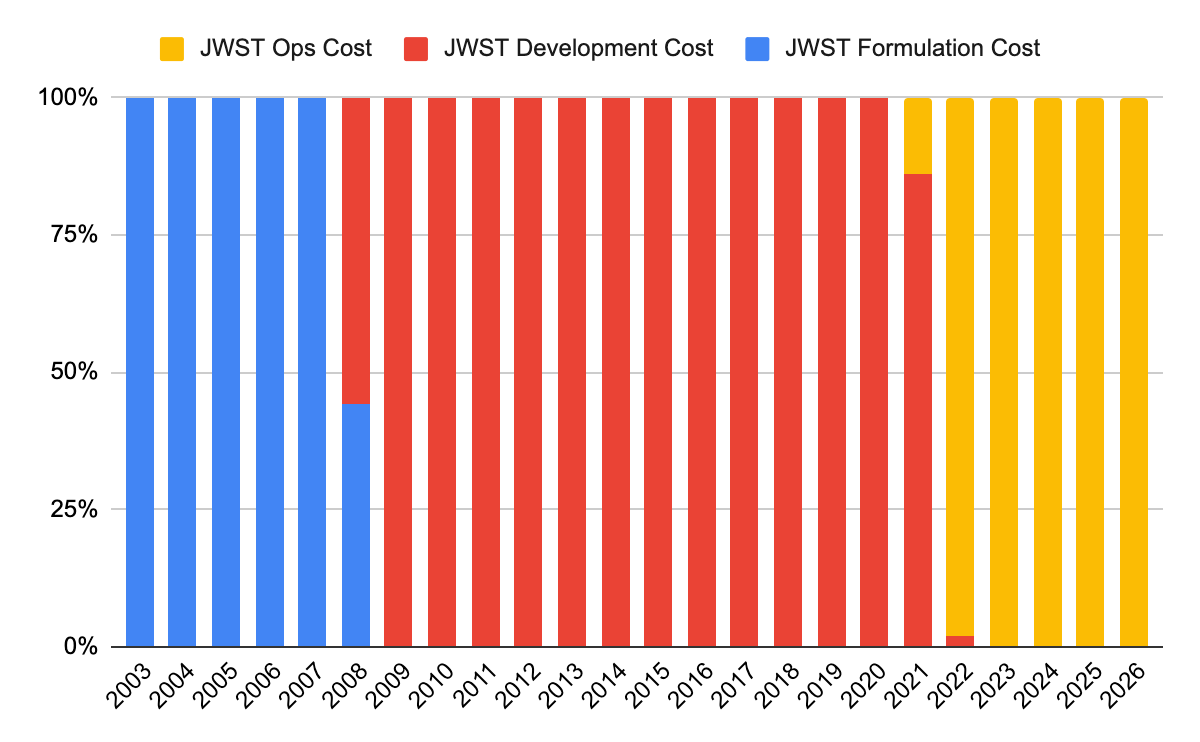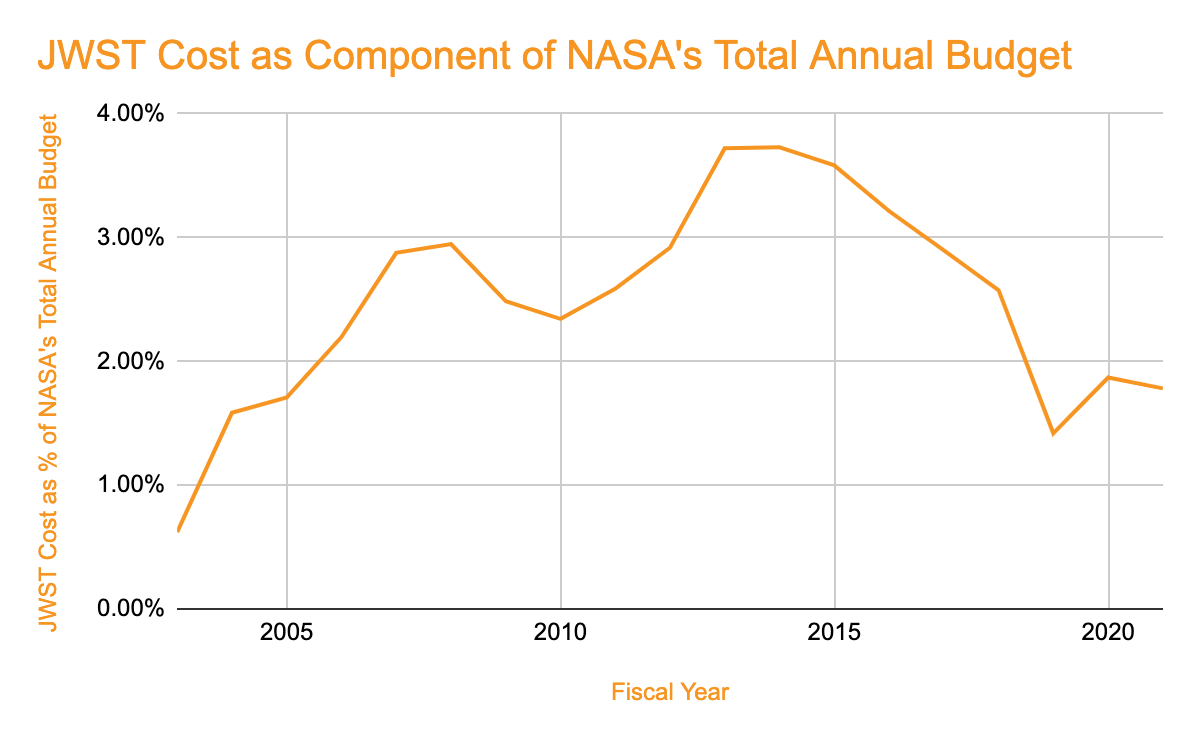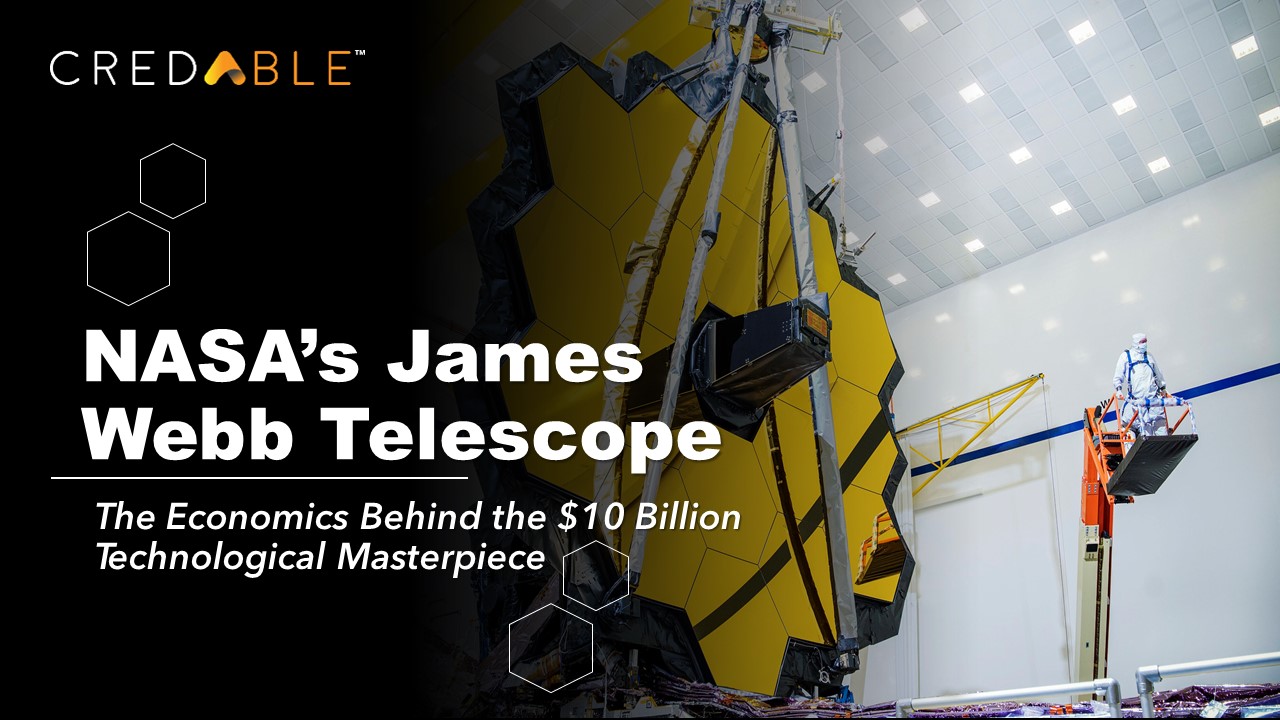Is NASA’s James Webb Telescope Another Man-made Wonder?
On 25th December 2021, the James Webb Space Telescope took off from ESA’s launch site at Kourou in French Guiana, onboard an Arianespace Ariane 5 rocket. NASA’s James Webb Space Telescope( JWST) has been decades in the making and is an engineering marvel that probably lays down the potential for new cosmic knowledge. Besides, the $10 billion JWST is NASA’s largest and most powerful space telescope ever made.
The Astronomy community has been in the fray with huge hopes tied down to the successful launch and its travel to the second Lagrange point (L2) — a gravitationally stable location in space—the telescope’s permanent home. This technological masterpiece will be stationed 1 million miles from Earth where the 25-foot golden mirror will be able to collect light that can unlock the cosmic mysteries that go back to the Big Bang. Now that it has left the Earth’s atmosphere and is traveling towards its final destination, it’s time to talk about the relentless efforts and working capital involved to keep the mega-project running.
Let’s dive right in!
What is the James Webb Space Telescope (JWST)?
The James Webb Space Telescope is primarily designed to provide improved cosmic knowledge powered by infrared resolution and sensitivity that enables a broad range of investigations across different fields like astronomy and cosmology. According to NASA, it primarily focuses on carrying out investigations of four main areas: first light and ionization, assembly of galaxies after the Big Bang, the birth of stars and protoplanetary systems, and planets along with looking for the origin of life. After the take-off, it will take about a month for JWST to travel 1.5 million kilometers to L2. The second Lagrange Point (L2) is the perfect spot in outer space near Earth that lies just opposite the sun.
After the launch, JWST will undergo a series of calibration tests that involves a telescope deployment, sun-shield deployment, instrument turn-on, and telescope alignment. One of the biggest hurdles to the packing of JWST has been JWST’s primary mirror – Optical Telescope Element. This mirror consists of 18 hexagonal mirror segments which combine to create a 6.5-meter (21 ft) diameter mirror that will unfold by itself in space. Eventually, the finished telescope stands three stories tall with a sun-shield, the size of a tennis court that helps in keeping the telescope at minus 370 degrees Fahrenheit. The Space Telescope Science Institute has revealed that the best images are expected to turn up after six months of the launch.
The scientists believe that the powerful JWST will work in tandem with its predecessor, the Hubble Space Telescope, and give us amazing images of various celestial objects. In the end, JWST is the product of a massive and successful international collaboration between NASA, the European Space Agency (ESA), and the Canadian Space Agency that includes over 300 universities, organizations, and companies across the globe.
A Look Back at the Past
The plan of making this massive telescope started all the way back in 1990, after the launch of the formidable Hubble Space Telescope. During the 1980s, Garth Illingworth worked as the deputy director of the Space Telescope Science Institute in Baltimore where he recalls how his boss, Riccardo Giacconi talked about the idea. Giacconi came in one morning and wanted to start thinking about Hubble’s successor. According to him, it would take immense work and years before it will even come to fruition. Next, we know, Giacconi went on to win a Nobel Prize for his X-ray astronomy work and everyone took notice.
In the start, it all started with just a little group of people discussing and sketching concepts. However, that was still the 80s and technology hadn’t evolved. After a workshop in 1989, the next year allowed the experts to review, look at ideas and also form an expert committee to build a large infrared and sensitive yet extremely cold telescope that can become the successor to Hubble. The whole of the 90s went on in the planning, and in 2002, the telescope got its name. It was only in 2004, that the construction of JWST began to fall in place.
The Delays and Roadblocks before JWST
When the planning for the JWST started, it wasn’t meant to be such a megaproject that would take decades to take off and start its probing. Some say it takes time for good things to come to fruition. JWST is one of them as it was originally slated to launch in 2007, but unwarranted delays have only pushed its launch by 14 years. Factors such as a mix of human error, engineering hurdles and political hesitancy along with a mismanaged project plan, have all resulted in countless delays. Since then, the budget has only ballooned and so have been the delays.
Due to the lack of progress, U.S. Congress threatened to end funding for the JWST in 2011. But, the constant rallying by scientists, students, astronomy community along with U.S. representatives, helped save the future of the JWST. Congress decided to fund it again in November 2011. The launch was postponed to 2014, but again due to mistakes, it was further pushed. Futher, in March 2018, the scheduled launch of JWST was delayed owing to a number of technical issues with the launched spacecraft. Most of the blame for the delay is relayed on the telescope’s primary contractor Northrop Grumman.
The use of an incorrect solvent to clean the fuel valve to apply the wrong voltage during a test run has only stalled the progress at the company’s facility where the main component was being assembled. So much so, that members of Congress held a hearing, to question Northrop Grumman’s CEO about the series of mistakes. This has only added to NASA’s liabilities and pushed the launch to 2018 and increased the total cost to $8.8 billion. Despite the dedication, the program struggled with serious technical problems and the delays kept coming in. Finally the JWST was successfully launched on Dec 25, 2021, at 7:20 a.m. EST. You can check the progress here.
JWST is an ambitious engineering project where NASA spent around $9.7 billion over the last three decades. Of the total amount spent, NASA spent a considerable chunk of about $8.8 billion on spacecraft development between 2003 and 2021. The other $861 million is meant to support five years of operations to run the JWST. After adjusting for inflation, NASA released new details where the lifetime cost of this engineering marvel is going to cost approximately $10.8 billion after taking operational costs and the developmental costs into account till 2026.

However, JWST wasn’t just NASA’s most ambitious initiative but also had significant contributions from the European Space Agency (ESA) and the Canadian Space Agency (CSA). The $9.7 billion was only just NASA’s portion spread out over 24 years that went into its development. Similarly, ESA provided instruments and vehicles- Ariane 5 launch vehicle and two of the four science instruments- for an estimated cost of €700 million. While the Canadian Space Agency contributed various sensors and scientific instrumentation to the JWST development that approximately stands at CA$200 million. Such an initiative that has the potential to reshape cosmos history tops the chart of expensive scientific tools/platforms followed by another wonder: the Hubble Space Telescope and the Large Hadron Collider at CERN.

During the JWST development phase, the roadblocks had the potential to put an end to this. But, NASA’s consistent aim and the relentless zeal from the Astronomer and scientific community made it possible. NASA’s expenditure on JWST wasn’t paid all at once and the recent budget from NASA revealed how the annual expenditure can vary depending on the specificity of the project along with the number of highly-trained resources, scientists, etc., it needs to keep the project running. Such breakdowns in budget eventually help NASA to plan ahead and shoulder the cost for such ambitious projects such that it doesn’t run into delays and stays within 3% of NASA’s annual budget.

Future of The Engineering Marvel
As the delays continued to push the launch, it left the astronomy community annoyed. It reached such heights that reputed science journals like Nature referred to the giant Telescope as “the telescope that ate astronomy.” Sciencejournal said that “a project intended to revolutionize astronomy now threatens to derail NASA’s entire space sciences program.” Now that it is on its way to its permanent home, it will aid in revolutionizing and rewriting the Cosmos history right from the Big Bang, faraway planets to other galaxies and nearby stars.
With such a huge price tag, now it turns to look at all the data that it sends after it has unfurled its giant-sized mirror and other operational elements. However, one serious concern that has lingered in experts’ minds is the longevity of the telescope. While the Hubble Telescope remains active after 30 years, JWST is only looking to last just five years or just ten years at maximum capacity. But, only time will tell what details it will uncover. In addition, another massive project is lined up to study planets around distant stars so that the search for signs of life in other planets can start and can also be launched by the 2040s.
It’s all about the waiting game and looking for all the priceless insights it will provide into our cosmos knowledge.
Think Working Capital, Think CredAble!
